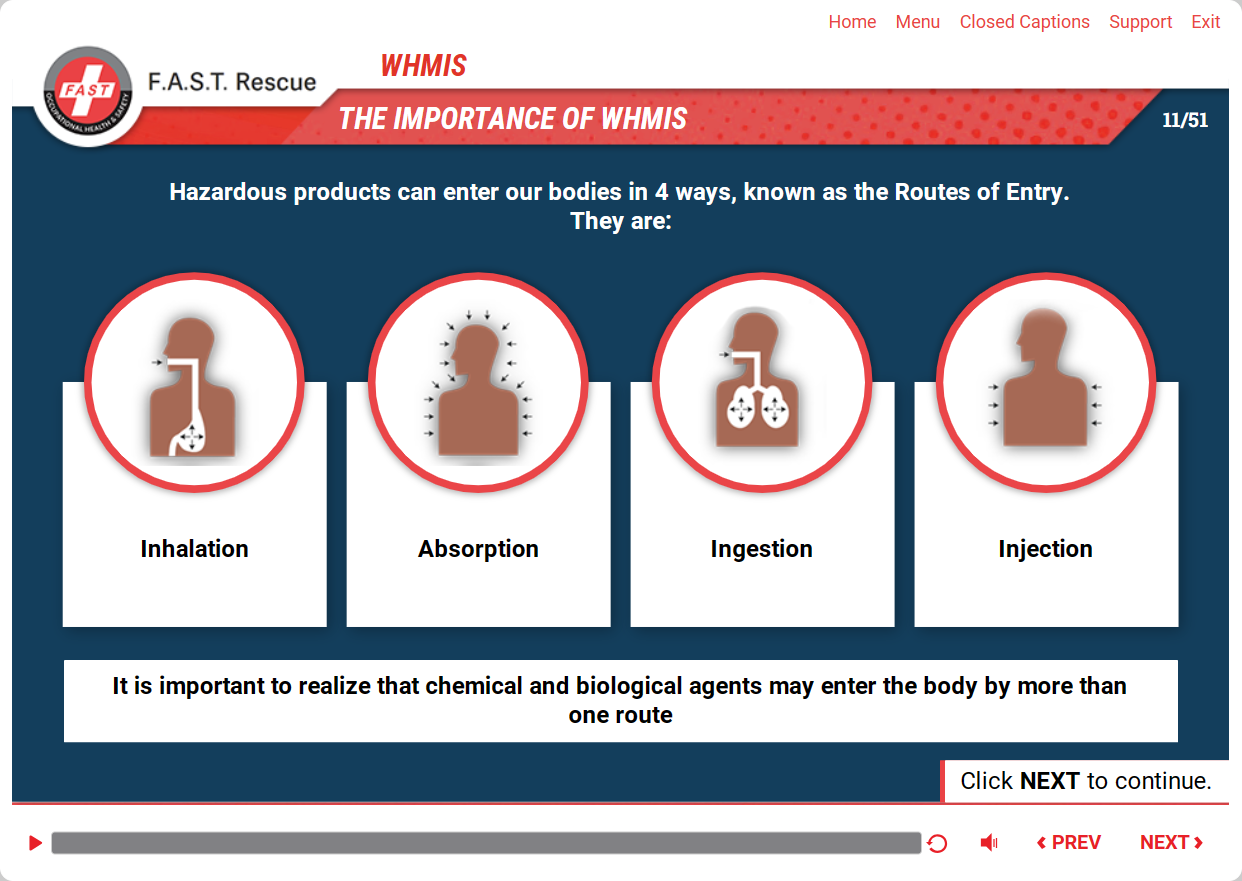WHMIS labels are standardized labels used to communicate important information about hazardous materials in the workplace. There are two types of WHMIS labels required in the workplace for hazardous products:
Supplier labels: These labels are applied by the manufacturer or supplier of the hazardous product. They contain important information such as the product identifier, supplier identifier, hazard symbols, hazard statements, precautionary measures, and any other relevant information required by WHMIS regulations.
Workplace labels: Workplace labels are used when hazardous products are transferred from their original container to a secondary container, such as a spray bottle or storage container, within the workplace. These labels must include the product identifier and appropriate hazard information, ensuring that workers can easily identify the contents and associated risks.
Apart from the above mentioned chapters, the course also highlights the following:
Pictograms: Pictograms are standardized symbols used to convey specific hazards associated with chemicals. These symbols are easily recognizable and provide quick visual cues about the potential dangers posed by hazardous materials.
Safety Data Sheets (SDS): SDSs provide detailed information about hazardous products, including their chemical composition, physical and health hazards, safe handling and storage procedures, and emergency response measures.
Hazardous Products: This section of the course focuses on identifying and categorizing hazardous products commonly found in the workplace.
Consumer Products: While workplace safety primarily revolves around hazardous materials used in industrial settings, employees may also encounter hazardous substances in consumer products. This part of the course educates workers on the potential hazards associated with everyday consumer products, such as cleaning agents, paints, and pesticides.



